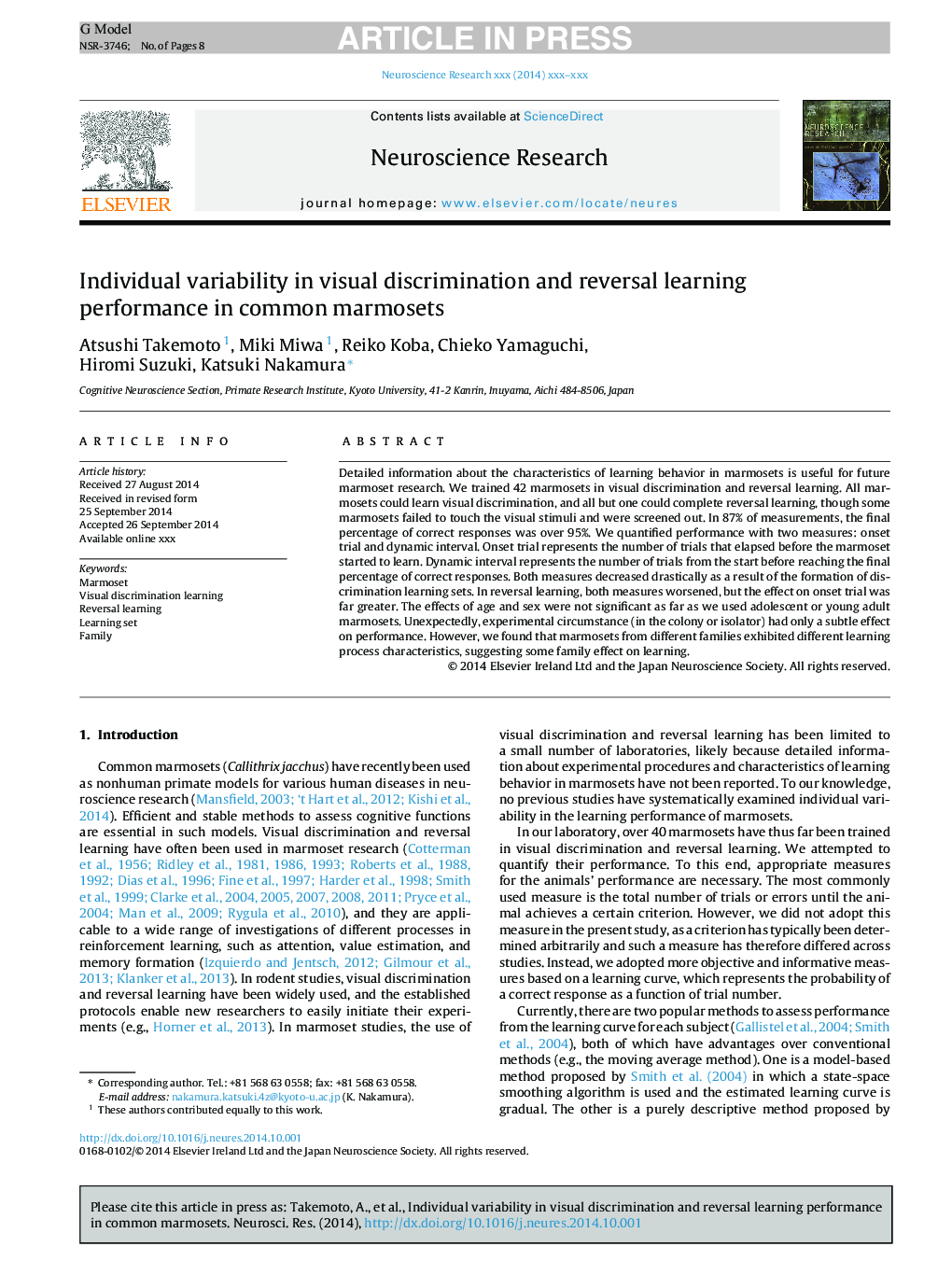| Article ID | Journal | Published Year | Pages | File Type |
|---|---|---|---|---|
| 6286146 | Neuroscience Research | 2015 | 8 Pages |
Abstract
Detailed information about the characteristics of learning behavior in marmosets is useful for future marmoset research. We trained 42 marmosets in visual discrimination and reversal learning. All marmosets could learn visual discrimination, and all but one could complete reversal learning, though some marmosets failed to touch the visual stimuli and were screened out. In 87% of measurements, the final percentage of correct responses was over 95%. We quantified performance with two measures: onset trial and dynamic interval. Onset trial represents the number of trials that elapsed before the marmoset started to learn. Dynamic interval represents the number of trials from the start before reaching the final percentage of correct responses. Both measures decreased drastically as a result of the formation of discrimination learning sets. In reversal learning, both measures worsened, but the effect on onset trial was far greater. The effects of age and sex were not significant as far as we used adolescent or young adult marmosets. Unexpectedly, experimental circumstance (in the colony or isolator) had only a subtle effect on performance. However, we found that marmosets from different families exhibited different learning process characteristics, suggesting some family effect on learning.
Related Topics
Life Sciences
Neuroscience
Neuroscience (General)
Authors
Atsushi Takemoto, Miki Miwa, Reiko Koba, Chieko Yamaguchi, Hiromi Suzuki, Katsuki Nakamura,
